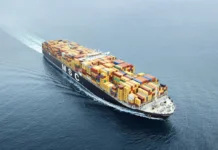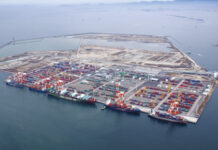
The Shanghai Containerised Freight Index (SCFI) turned negative following four weeks of stable or rising rates: SCFI dropped 3.6% week over week after four weeks of rising or stable rates, implying an overhang from the uncertain demand situation. The SCFI is now only 29% above the 2019 level.
Transpacific carriers announced a General Rate Increase (GRI) effective 15 May 2023. However, we think more capacity discipline will be needed to sustain the freight rates before any expectations of a potential restocking-led sequential demand recovery materialises in the second half of the year.
Transpacific contract rates settling lower, JOC quoted from six liners, six forwarders, four importers and two consultants, saying that Transpacific West Coast (TPWC) contract rates settled at US$1,200/FEU for big beneficial cargo owners (BCOs) and US$1,350-1,500/FEU for the rest, plus a US$1,000/FEU premium on USEC. This is below previous evidence of TPWC contract rates settling at US$1,500/FEU.
Downtrend in US inventory levels amid resilient retail sales points to imminent restocking: US real GDP slowed to 1.1% quarter over quarter annualised in 1Q23 (vs 2.6% in 4Q22), in which a sharp drop in inventory accumulation chopped off 2.3ppt from growth as businesses were unwilling to add stockpiles in anticipation of soft demand.
However, real consumer spending accelerated to 3.7% quarter on quarter annualised (vs 1% in 4Q22), boosted by an 8% inflation-adjusted increase in household disposable income and 6.5% growth in consumer spending on goods after a year of limited growth.
We think a continued normalisation in US inventories could drive a restocking-led volume recovery for liners in 2H23, especially if consumer spending on goods holds up well (see Restocking imminent despite headwinds, 25 March 2023).
Mixed performance in dry bulk and tanker rates: As of 27 April, the Baltic Dry Index increased 10% week over week led by 28% increase in Capesize rates. The Baltic Dirty Tanker Index declined 8% week over week, while the Baltic Clean Tanker Index dropped 23%. In April-to-date, VLCC rates for Middle East Gulf to US Gulf have retreated 60%, likely weighed down by OPEC production cuts announced in early April.
The article has been written by Parash Jain, Head of Shipping & Ports & Asia Transport Research at HSBC





